Comet 2014 E2 Jacques
Comet 2014 E2 Jacques was a nice bright comet visible in the pre-dawn skies during August 2014. Briefly visible to the naked eye, it displayed a large, greenish coma and a faint, narrow ion tail.
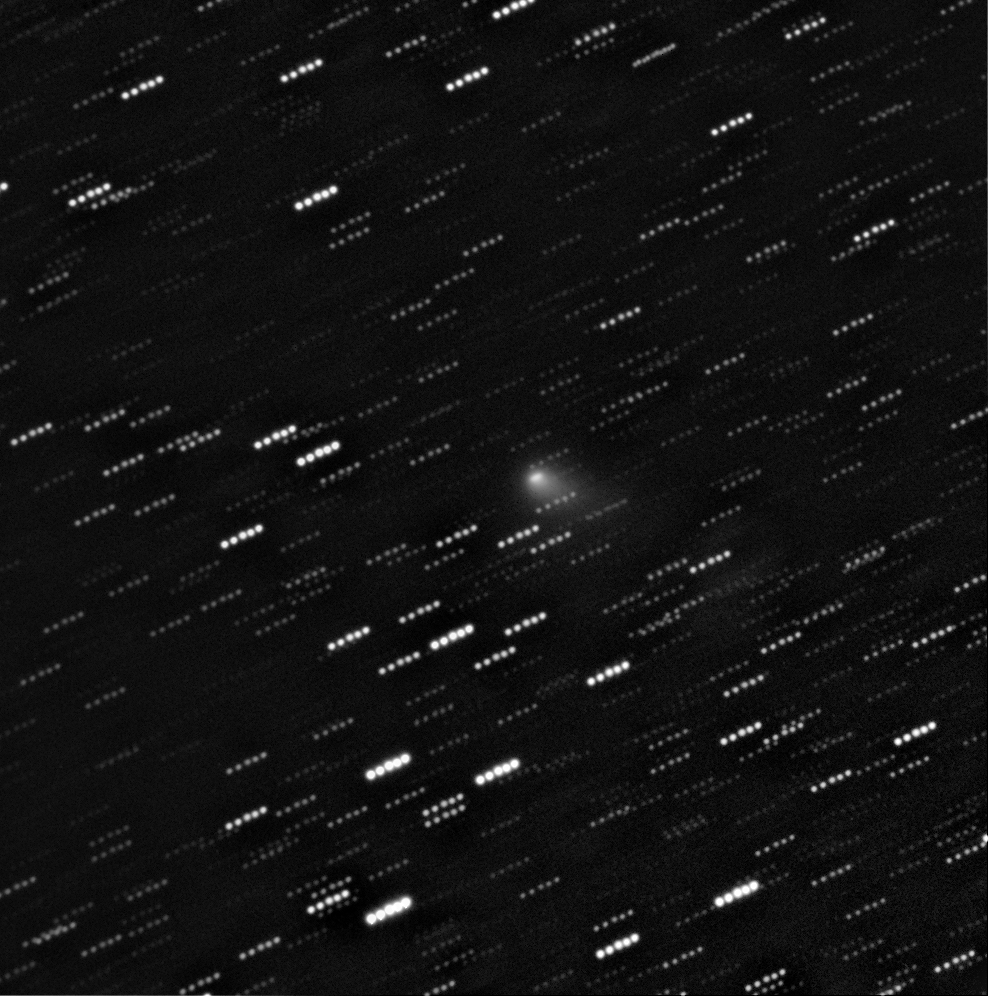
Comet 2014 E2 Jacques. 30 March, 2014.
Combination of 5, 3 minute images unfiltered.
SBIG STL-1001E CCD. 20" f/6.8 cassegrain at prime focus.
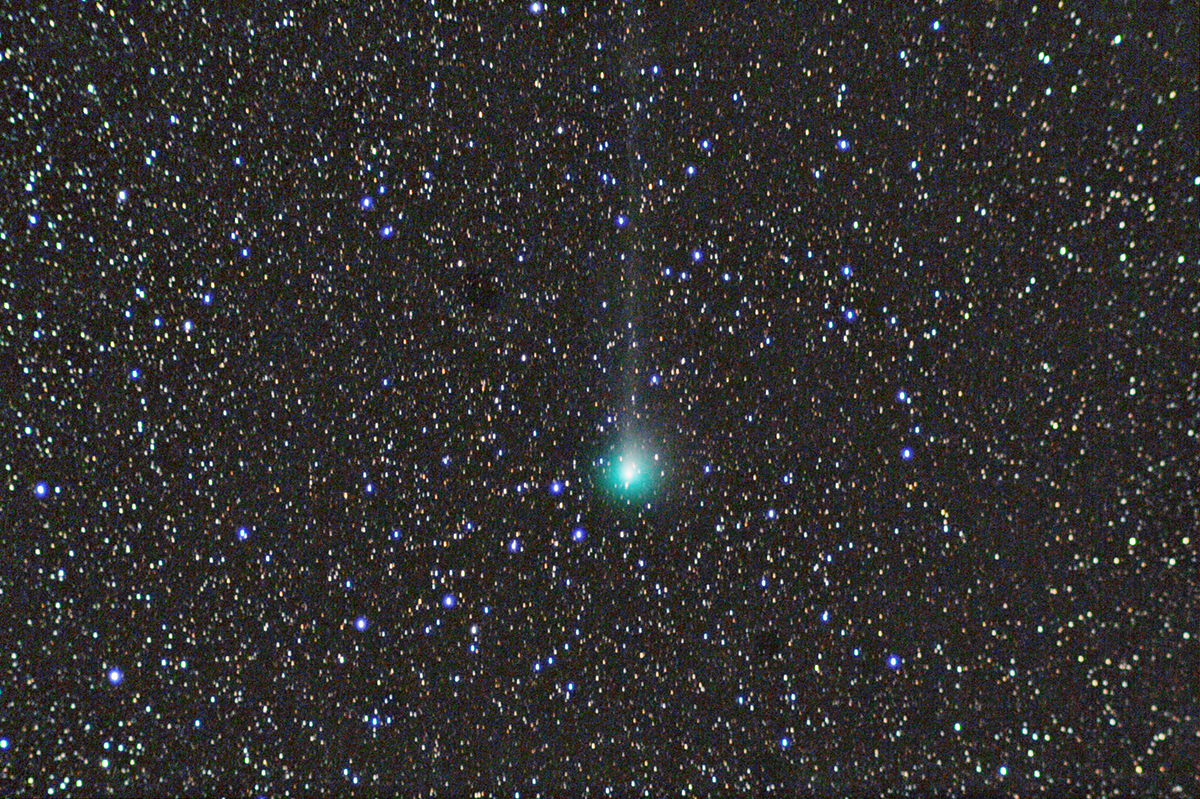
Comet 2014 E2 Jacques. 3 August, 2014.
Combination of 6, 2 minutes images.
Canon 350D DSLR camera. 5" f/5 refractor at prime focus.
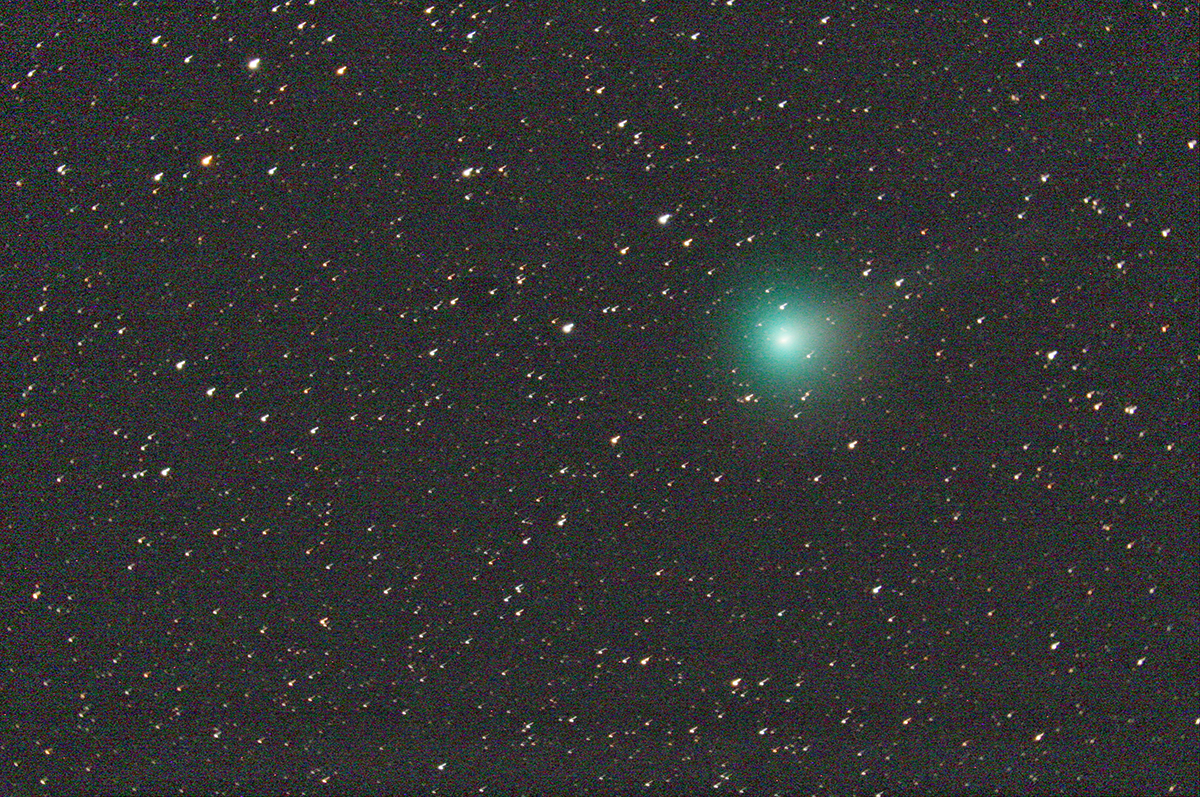
Comet 2014 E2 Jacques. 3 August, 2014.
Combination of 6, 2 minute images.
Canon 350D DSLR camera. 12" f/10 schmidt-cassegrain with an f/6.3 foral reducer.
By August 19, the comet was displaying a long, thin ion tail in addition to a shorter, most broard dust tail, with a substancial angle between the 2.
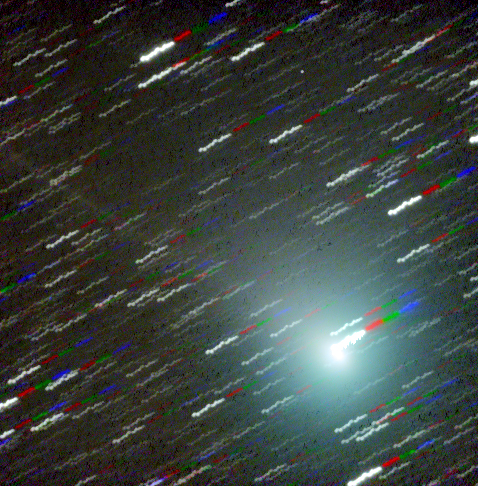
Comet 2014 E2 Jacques. 19 August, 2014.
Combination of 5, 1 minute images using red, green and blue filters.
SBIG ST9XE CCD. 12" f/10 schmidt-cassegrain with an f/6.3 foral reducer.
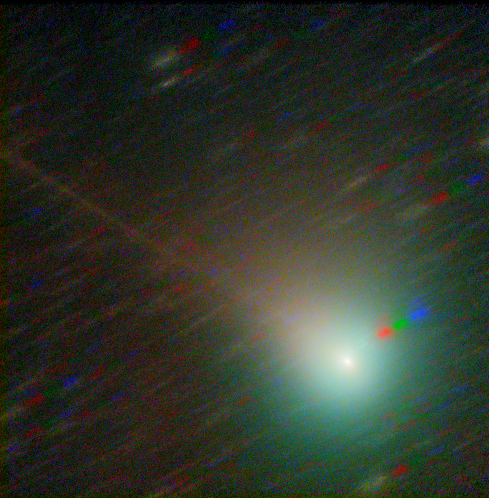
The same image as above, but combined using a median filter to minimise the presence of the stars.
As the comet moved away from the Sun, it travelled along the northern Milky Way providing a number of interesting conjunctions with deep-sky objects. On August 20 for example, the comet was located in front of IC 1805, the Heart Nebula.
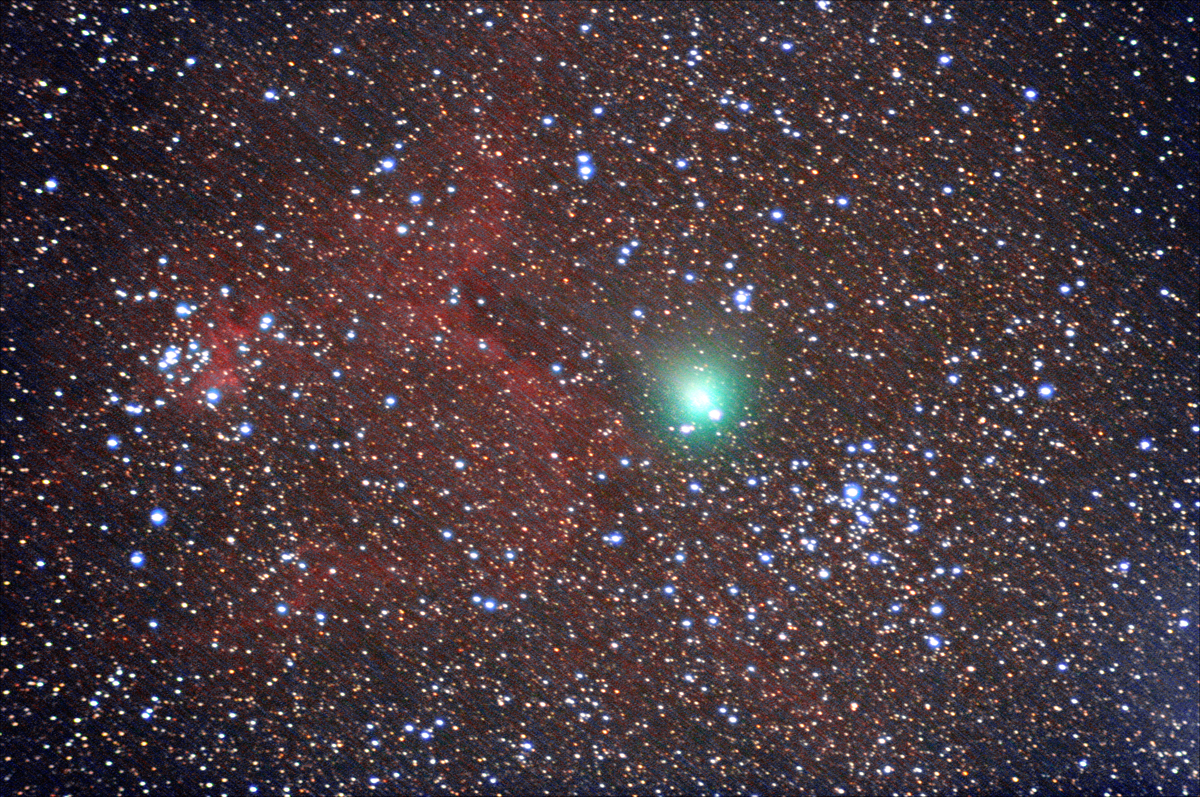
Comet 2014 E2 Jacques. 20 August, 2014.
Combination of 10, 2 minutes images.
Canon 350D DSLR camera. 5" f/5 refractor at prime focus.
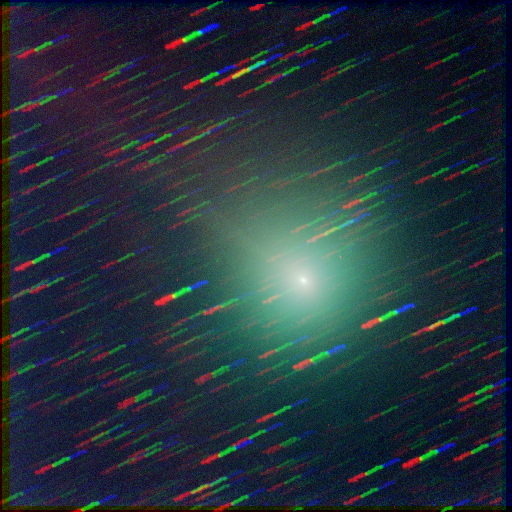
Comet 2014 E2 Jacques. 20 August, 2014.
Combination of 5, 1 minute images using red, green and blue filters.
SBIG ST9XE CCD. 12" f/10 schmidt-cassegrain with an f/6.3 foral reducer.
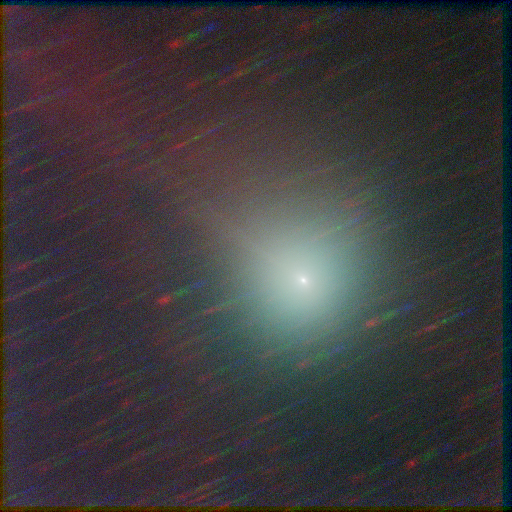
The same image as above, but combined using a median filter to minimise the presence of the stars.
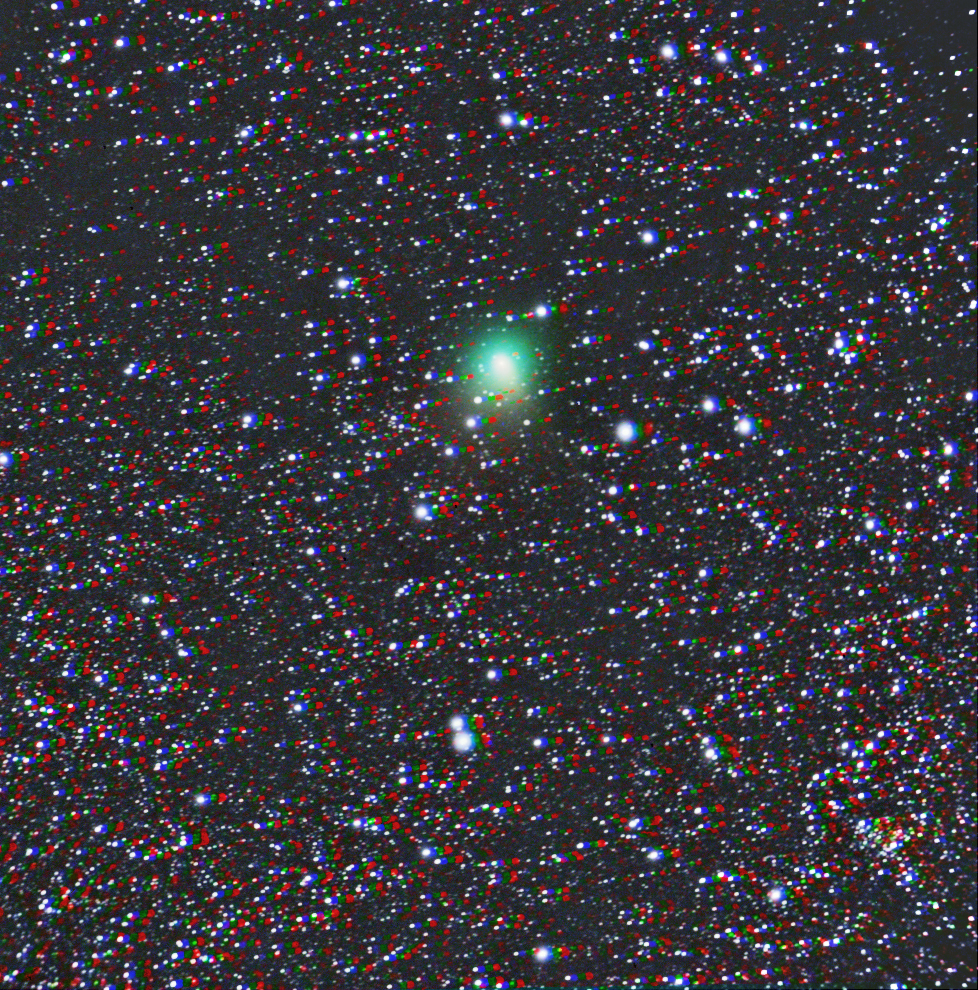
Comet 2014 E2 Jacques. 24 August, 2014.
Combination of 5, 3 minute images using red, green and blue filters, and 10, 3 minute images unfiltered.
SBIG STL-1001E CCD. 5" f/5 refractor at prime focus.
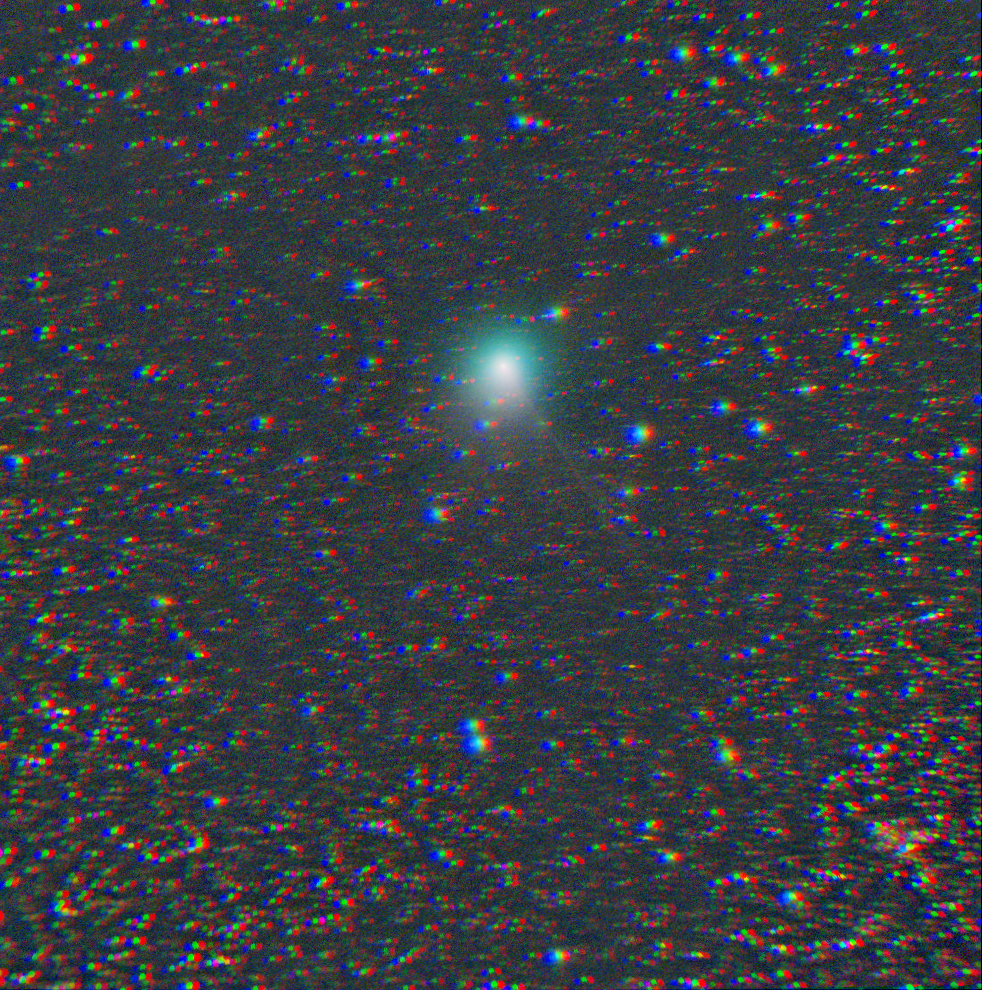
The same image as above, but combined using a median filter to minimise the presence of the stars.
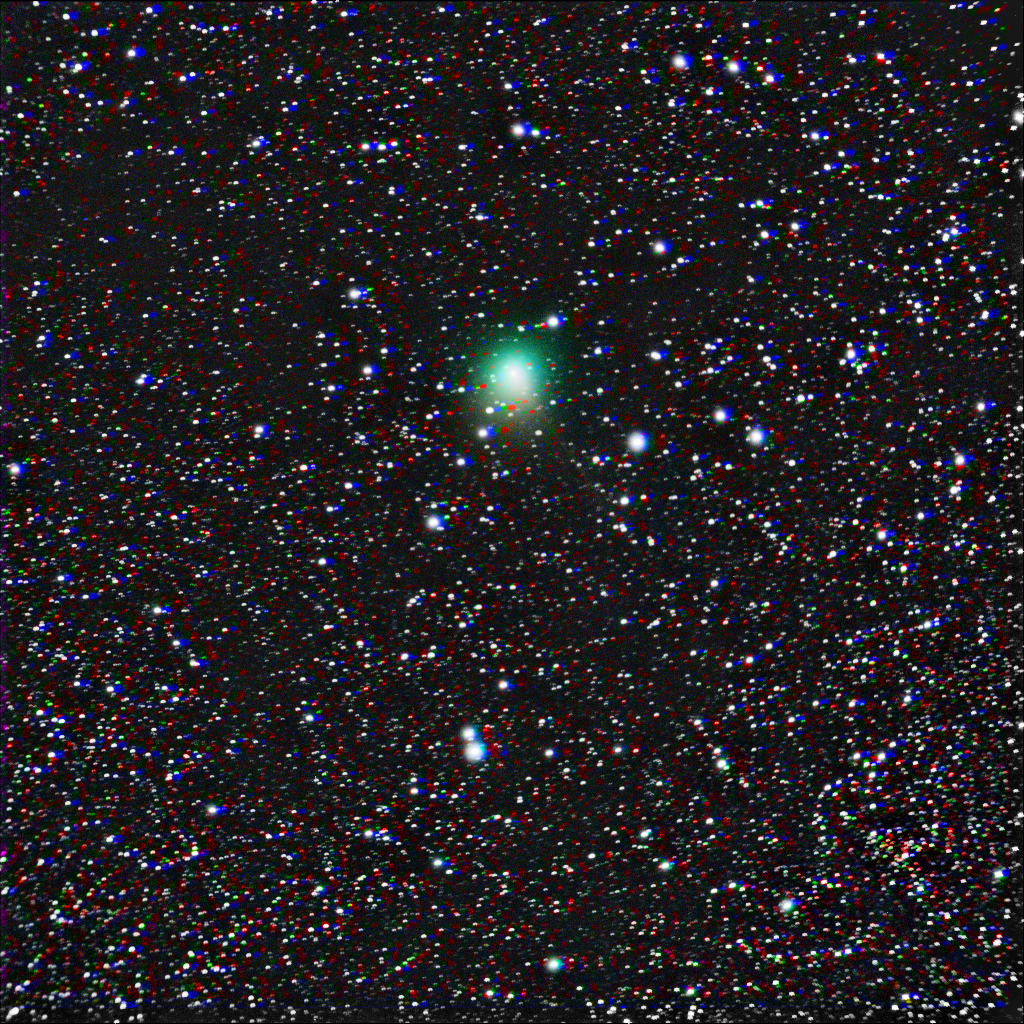
Comet 2014 E2 Jacques. 25 August, 2014.
Combination of 5, 3 minute images using red, green and blue filters.
SBIG STL-1001E CCD. 5" f/5 refractor at prime focus.
On August 31, the comet was located in front of IC 1396.
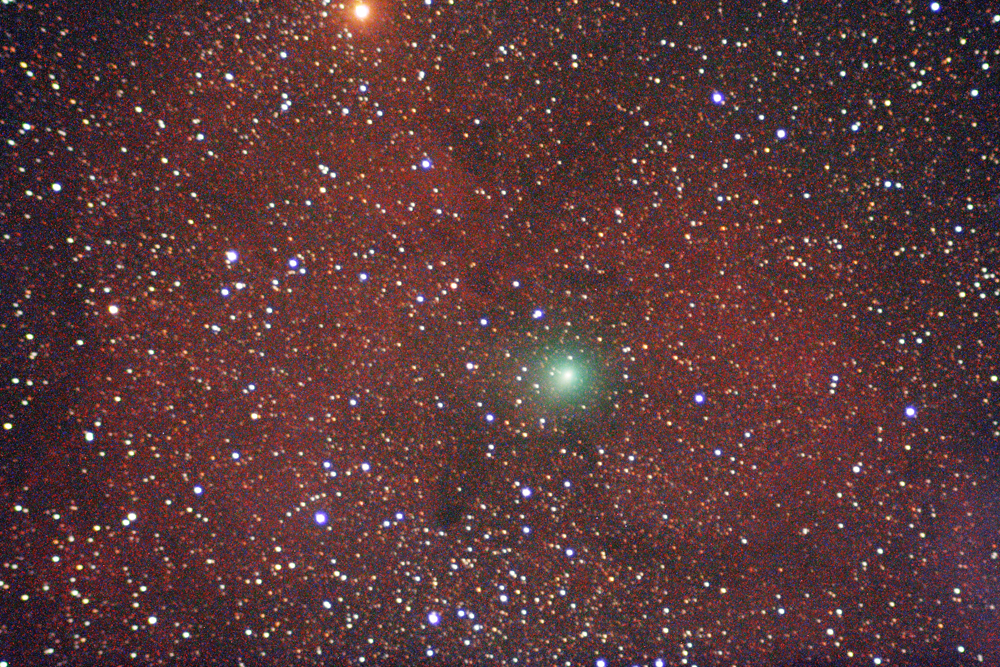
Comet 2014 E2 Jacques. 31 August, 2014.
Combination of 10, 2 minute images.
Canon 350D DSLR camera. 5" f/5 refractor at prime focus.
While the comet was bright, I decided to try and obtain a spectrum. I had only tried this once before on a comet that turned out to be too faint. The resulting spectrum is shown below. The dark lines in the graphical trace indicate the Swan lines of Carbon molecules, C2 and C3.

Comet 2014 E2 Jacques. 3 August, 2014.
Combination of 10, 3 minute images.
SBIG SGS spectrograph and ST-8XE CCD. 20" f/6.8 cassegrain at prime focus.
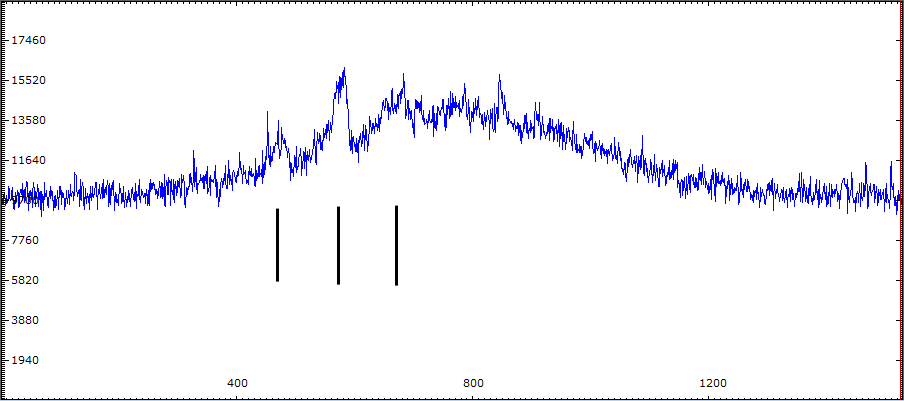
Comet 2014 E2 Jacques.
Graphical trace of the above spectrum.














